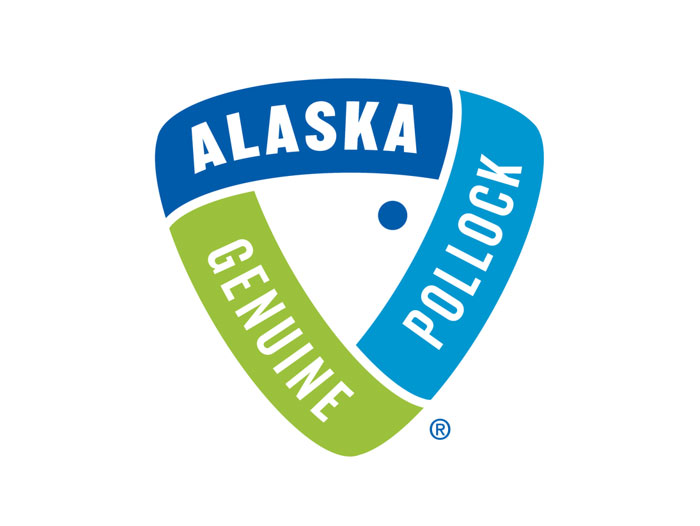Allied Wild Alaska Pollock Associations Brief Staff, NGOs on Capitol Hill
May 24, 2019 | 4 min to read

WASHINGTON, D.C.—Yesterday, leading representatives from the Association of Genuine Alaska Pollock Producers (GAPP), NOAA Fisheries, At-Sea Processors Association and Marine Stewardship Council gathered for a briefing hosted by the Oceans Caucus Foundation (OCF) meant to highlight successful partnerships that are good for both business and America’s domestic natural resources. The briefing, held in the Russell Senate Building, was attended by Congressional staff and NGO representatives connected to the seafood industry.
The distinguished panelists used Wild Alaska Pollock as a case study showcasing that good business and healthy fish stocks go hand in hand. Consistently, panelists discussed Wild Alaska Pollock’s presence in the seafood industry as the largest, certified sustainable fishery, accounting for thirty percent (by weight) of all the fish caught in the U.S. every year.
“Wild Alaska Pollock landings average around 2.5 billion pounds per year over the past 40 years,” said Jim Gilmore, Public Affairs Director for the At-Sea Processors Association. “Wild Alaska Pollock can be found in everything from the favorite McDonalds Filet-o-Fish sandwich to your California roll. Over 70% of what we produce is exported around the world, giving our fish an important global footprint in Asia and the EU.”
Panelists discussed how the current management systems under which the Wild Alaska Pollock fishery operates came to be. Specifically, Laurel Bryant of NOAA Fisheries explained that the management has evolved with fishery observer coverage and an emphasis on an ecosystem-based approach to management as best practices and the Marine Stewardship Agreement has evolved. The Alaska groundfish fisheries, in many ways, set the example of best practices that other U.S. fisheries have adopted.
All panelists also emphasized work to help the consuming public understand Wild Alaska Pollock and its sustainability success. Brian Perkins with the Marine Stewardship Council emphasized their work to help consumers understand what its MSC certification and “little blue fish” stands for, connecting consumers directly to Wild Alaska Pollock’s sustainability story at the point of purchase.
“We’re working on a major communications effort around National Seafood Month, in October, to help consumers understand what the little blue fish means,” said Perkins. “People doing things right in the marketplace need to be rewarded and the hope is that this will raise all boats.”
Similarly, Bryant, Perkins and Craig Morris, GAPP CEO all commented about narrative development efforts meant to meet consumers where they are and help them get excited about both the story that makes this protein perfect, and the current industry innovations making this product available to more consumers in more ways, every day.
“Increasingly we are seeing Wild Alaska pollock found on white table cloth restaurant menus, featured in recipes developed by such celebrities as Martha Stewart and Netflix celebrity chef Antoni Porowski, and finding its way into innovative products such as the recently launched Protein Noodles by Trident Seafoods or the first-ever chilled Wild Alaska Pollock Product, the Perfect Pollock Portions from American Seafoods,” said Morris.
Panelists took questions from the audience of the packed meeting room on a variety of topics, but all agreed that the partnerships between the organizations represented have helped to provide the industry with the strong story it has today.
“As a result of our partnerships that have evolved under the U.S. fisheries science-based management system, our nation is recognized as a global leader in sustainable seafood. Whether fished or farmed, U.S. seafood is a blue planet protein that helps power our blue economy.”
“What excites me most about the Wild Alaska Pollock industry is our unparalleled story,” added Morris. “One of being well managed, one of a public-private partnership with NOAA Fisheries and other agencies that ensures that our natural resource is preserved and protected, one of hardworking fishermen who are harvesting that natural resource off the shore of picturesque Alaska and turn that fish into products—both food and otherwise—using the entire animal. That’s a story we now need to work together to tell.”
About GAPP
The Association of Genuine Alaska Pollock Producers (GAPP) is dedicated to the marketing of once-frozen pollock products, harvested and processed in Alaska. A non-profit Alaska corporation formed in 2003, GAPP is working to promote Genuine Alaska Pollock in major whitefish markets around the world, with a focus on Europe, North America and Japan. It is our goal to educate both seafood buyers and consumers about the superior benefits of Genuine Alaska Pollock®. www.alaskapollock.org
About the Oceans Caucus Foundation
The Oceans Caucus Foundation (OCF) is a program of the ICCF that partners with leaders in multiple sectors in order to educate U.S. and international policymakers about the issues and needs of marine ecosystems and businesses that drive economic security domestically and around the world. The OCF directly supports the leadership of the bipartisan U.S. Congressional Oceans Caucus (OC) in the Senate and House, who share an understanding of the global dependence on healthy marine ecosystems. The OCF brings marine governance issues to the forefront of agendas on Capitol Hill in a truly bi-partisan, pro-development, and pro-conservation way. The OCF is shifting the conservation paradigm, building consensus, and inspiring policymakers to achieve real results.
About the Marine Stewardship Council
The Marine Stewardship Council is an international non-profit organisation. We recognise and reward efforts to protect oceans and safeguard seafood supplies for the future.
About the At-Sea Processors Association
As partners in these robust fisheries, APA works with fishery managers, scientists, environmentalists and other industry members to ensure the continued health and sustainability of our marine resources.
